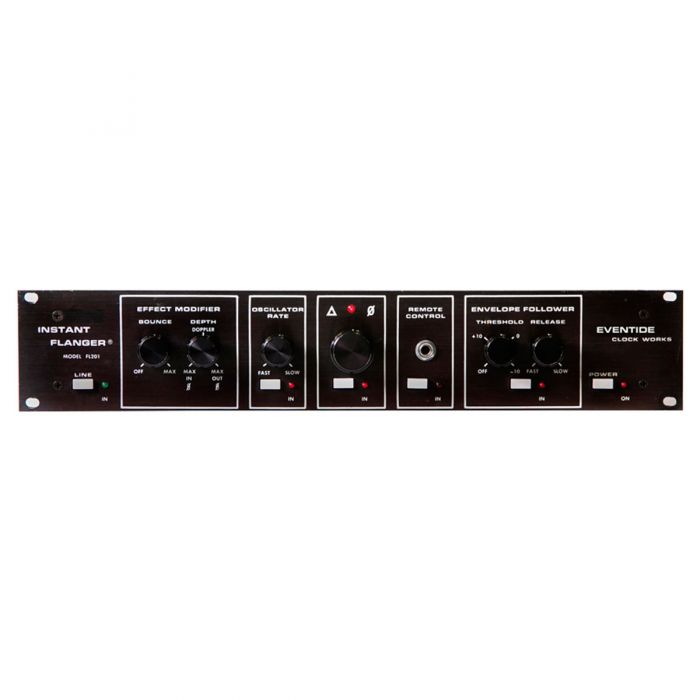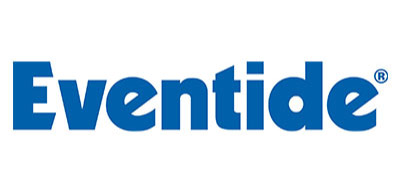This site uses cookies to provide you with the great user experience. Find out more here. By using this site you consent to use our cookies.
Eventide Instant Flanger MK II
Classic Flanging for a Modern Mix
The Instant Flanger Mk II brings the great sound of vintage tape flanging to your plug-in toolbox. An authentic emulation of the original 1975 studio rackmount, the Instant Flanger was famously used on David Bowie’s “Ashes to Ashes” and Cyndi Lauper’s “Time After Time." A truly versatile tool, engineers and producers have used it for stereo sweetening, subtle modulations, double tracking, and extreme flanging effects.
Classic Flanging for a Modern Mix
The Instant Flanger Mk II brings the great sound of vintage tape flanging to your plug-in toolbox. An authentic emulation of the original 1975 studio rackmount, the Instant Flanger was famously used on David Bowie’s “Ashes to Ashes” and Cyndi Lauper’s “Time After Time." A truly versatile tool, engineers and producers have used it for stereo sweetening, subtle modulations, double tracking, and extreme flanging effects.
Spread the Sound Around with Pseudo Stereo
Turn flat mono guitars into huge stereo leads or have your single channel synthesizer fill out the sides of your mix with pseudo stereo. The Instant Flanger Mk II has dual outputs that create three different sonic images - “Shallow”, “Deep”, and “Wide”. Combining “Wide” Mode with the “Low Cut” control is an easy way to place multiple harmonies behind the lead. Fine-tune the resonance of your flanging effect by using the “Depth” and “Feedback” controls.
True End-to-end Emulation
Tape machines use servo motors to run at constant speed and when an engineer pressed a thumb on the flange and then suddenly let go, the capstan motor servo reacts - overshooting and undershooting as it seeks to recover proper speed. In other words, it ‘bounces’. The Instant Flanger convincingly mimicked this behavior with its innovative "Bounce" control knob. Use this feature to add a real world groove to your tracks.
Distinguishing Flanging from Phasing Since 1975
The method of tape flanging was originally achieved by playing back a track on two separate tape machines and using your thumb to apply pressure to the “tape flange” thereby slightly slowing down one of the machines. In the tape era, before the introduction of electronic effects devices, the terms “phasing” and “flanging” were used interchangeably. Then, in 1971, Eventide released the Instant Phaser which was based on analog filters rather than delay.
When the Instant Flanger was released in 1975, the original hardware manual explained “Old model phasing units used analog circuitry to modify the frequency spectrum. Eventide’s Instant Flanger uses a true time delay circuit, producing many more nulls and thus a much deeper effect than previously available with an all-electronic unit.”
- Depth controls the intensity of the effect. 100% adds the delayed signal to the dry signal. -100 % subtracts the dry signal from the delayed signal
- Three distinct flavours of flanging. Set the Mode switch for Shallow, Deep or Wide
- Manual control allows you to control the ‘comb’ effect by turning the Big Knob
- Oscillator drives the flanging at a user defined rate
- Envelope Follower drives the flanging based on the signal’s amplitude
- Remote maps the flanging control to a mod wheel for tactile manipulation
- Bounce mimics the distinctive effect of the tape machine’s capstan motor “hunting” for its proper speed when the engineer's thumb was lifted from the tape reel flange
- “Side Chain” allows for triggering the Envelope Follower from any source in the mix for inter-track mingling
- Exercise total control of the Oscillator with Sync and Retrig
- Tame the intensity by removing low frequencies from the flanged signal with the Low Cut control
| Specification | Platform Compatibility Microsoft Windows 7+ and Apple OS X 10.7+ DAW Compatibility Software: Plug-In Format Pro Tools 10 +: AAX Native Cubase 7+: VST2 Nuendo: VST2 Wavelab:VST2 Logic 8+: AU Ableton Live 7+: AU, VST2 SONAR: VST2 Studio One: AU, VST2 Digital Performer: AU Reaper: VST2 GarageBand: AU Audition: AU, VST2 |
|---|








